Elizabeth Bradley
Shape-based Feature Engineering for Solar Flare Prediction
Dec 28, 2020
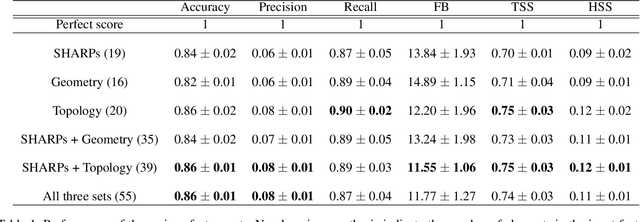
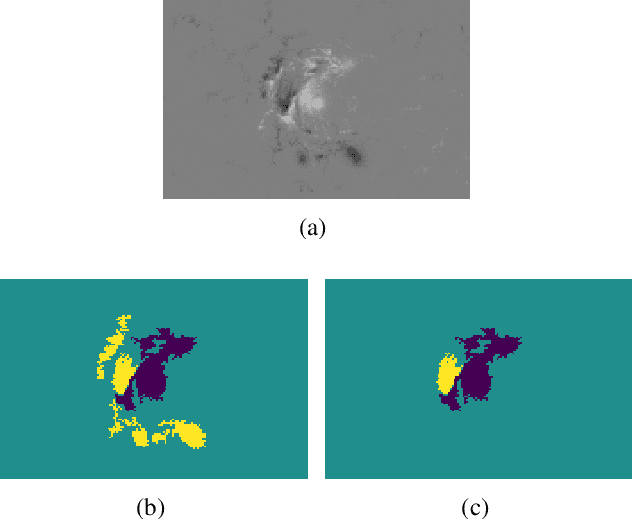
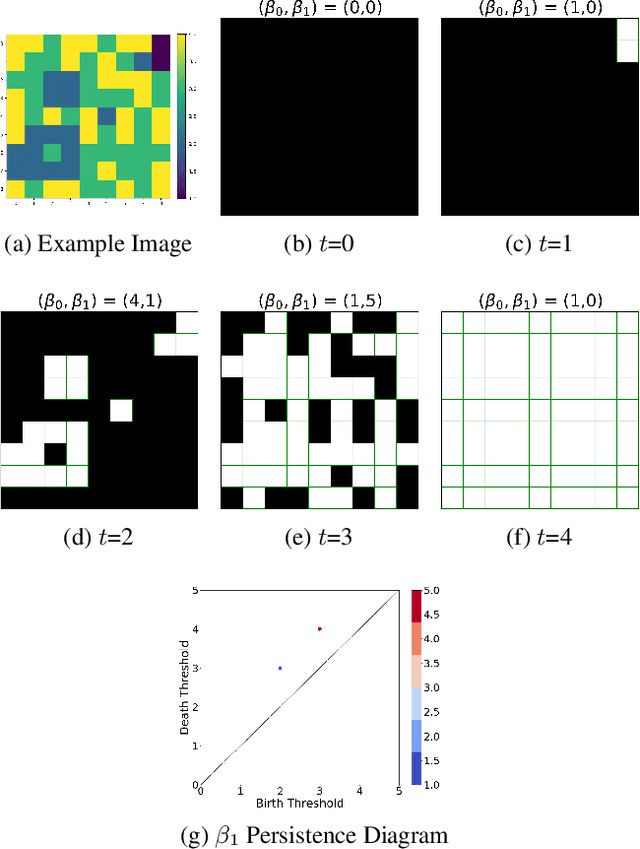
Abstract:Solar flares are caused by magnetic eruptions in active regions (ARs) on the surface of the sun. These events can have significant impacts on human activity, many of which can be mitigated with enough advance warning from good forecasts. To date, machine learning-based flare-prediction methods have employed physics-based attributes of the AR images as features; more recently, there has been some work that uses features deduced automatically by deep learning methods (such as convolutional neural networks). We describe a suite of novel shape-based features extracted from magnetogram images of the Sun using the tools of computational topology and computational geometry. We evaluate these features in the context of a multi-layer perceptron (MLP) neural network and compare their performance against the traditional physics-based attributes. We show that these abstract shape-based features outperform the features chosen by the human experts, and that a combination of the two feature sets improves the forecasting capability even further.
Strange Beta: An Assistance System for Indoor Rock Climbing Route Setting Using Chaotic Variations and Machine Learning
Oct 03, 2011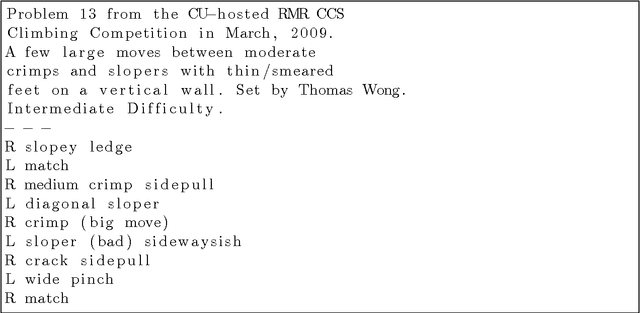

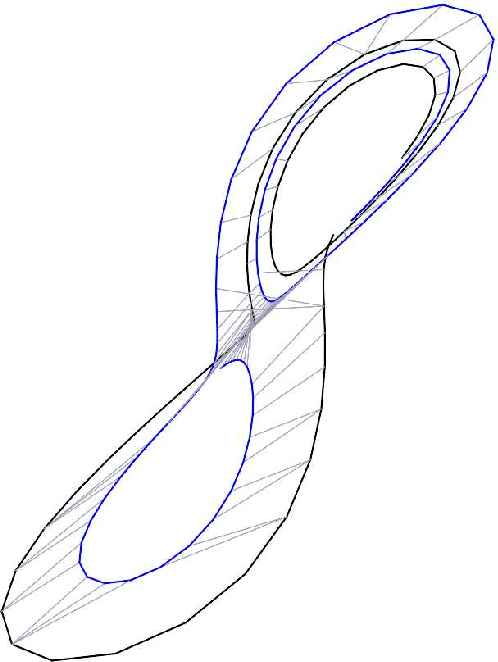

Abstract:This paper applies machine learning and the mathematics of chaos to the task of designing indoor rock-climbing routes. Chaotic variation has been used to great advantage on music and dance, but the challenges here are quite different, beginning with the representation. We present a formalized system for transcribing rock climbing problems, then describe a variation generator that is designed to support human route-setters in designing new and interesting climbing problems. This variation generator, termed Strange Beta, combines chaos and machine learning, using the former to introduce novelty and the latter to smooth transitions in a manner that is consistent with the style of the climbs This entails parsing the domain-specific natural language that rock climbers use to describe routes and movement and then learning the patterns in the results. We validated this approach with a pilot study in a small university rock climbing gym, followed by a large blinded study in a commercial climbing gym, in cooperation with experienced climbers and expert route setters. The results show that {\sc Strange Beta} can help a human setter produce routes that are at least as good as, and in some cases better than, those produced in the traditional manner.
* University of Colorado Computer Science Department Technical Report
 Add to Chrome
Add to Chrome Add to Firefox
Add to Firefox Add to Edge
Add to Edge